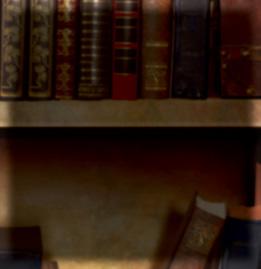
10 minute read
TEACHING CONCEPTS IN HISTORY
Dominic Kirby outlines some of his strategies on how to teach complex or often-misunderstood concepts in History.
By Dominic Kirby
Advertisement
Afew months ago I was wandering around the cloisters of Wells Cathedral in Somerset. Wells is a beautiful cathedral. Its cloisters aren’t perhaps as fine as those of Canterbury or Gloucester but they’re very impressive and majestic nonetheless. As I was wandering around them, an old door caught my eye. At first glance it was a very typical door in a very typical setting – a heavy oak door set in a heavy stone arch. I’m no dendrochronologist but I’ve visited enough castles, cathedrals and churches in my time to know it was almost certainly late medieval or Tudor. What caught my eye about this old but otherwise unremarkable door was that it featured a very obvious anachronism – it had a modern combination lock on it. Clearly the original lock had been replaced with this new one.
PEDAGOGY PEDAGOGY
I wandered on and thought no more I wandered on and thought no more of the door as I continued looking of the door as I continued looking around the rest of the cathedral. It around the rest of the cathedral. It was only later, when I was sipping a was only later, when I was sipping a hot chocolate in one of the pleasant hot chocolate in one of the pleasant little cafes in the cathedral precinct, little cafes in the cathedral precinct, it struck me that this door would be it struck me that this door would be an excellent example to use when an excellent example to use when teaching two key concepts in History teaching two key concepts in History – continuity and change. Continuity, – continuity and change. Continuity, because it’s the same door in the because it’s the same door in the same cathedral performing the same same cathedral performing the same purpose it was installed for fi ve or six purpose it was installed for fi ve or six centuries ago. Change, because a key centuries ago. Change, because a key feature of the door (pun intended) has feature of the door (pun intended) has been replaced with a new one. The been replaced with a new one. The door is both simultaneously the same door is both simultaneously the same and paradoxically diff erent from how it and paradoxically diff erent from how it was in the past. was in the past.

This paradox is one reason I think This paradox is one reason I think learning and understanding a new learning and understanding a new concept in History can be a hard thing concept in History can be a hard thing for children to do – and potentially an for children to do – and potentially an even harder one to teach. Rather than even harder one to teach. Rather than a common noun, let’s take an abstract a common noun, let’s take an abstract one. Ask the next adult or informed one. Ask the next adult or informed teenager (another paradox?) you see teenager (another paradox?) you see to give you a working defi nition of to give you a working defi nition of democracy, nationalism or infl ation. democracy, nationalism or infl ation. Most of us ‘get the concept’ of what Most of us ‘get the concept’ of what they are, but if we’re put on the they are, but if we’re put on the spot and asked to give a meaningful spot and asked to give a meaningful defi nition or explanation of one of defi nition or explanation of one of them, let alone to analyse or evaluate them, let alone to analyse or evaluate it, it becomes a much harder thing to it, it becomes a much harder thing to do.do.
History, as a discrete academic History, as a discrete academic discipline, is peppered with concepts. discipline, is peppered with concepts. You can’t move for them. In recent You can’t move for them. In recent decades some of these concepts decades some of these concepts have been herded like livestock have been herded like livestock into a number of categories which into a number of categories which are collectively called ‘disciplinary’, are collectively called ‘disciplinary’, ‘procedural’ or, as they’re probably ‘procedural’ or, as they’re probably best known, ‘second-order’ concepts. best known, ‘second-order’ concepts. Much has been written about secondMuch has been written about secondorder concepts or SOCs and, perhaps order concepts or SOCs and, perhaps tellingly, there is no consensus or tellingly, there is no consensus or defi nitive list of what constitutes a defi nitive list of what constitutes a SOC. That said, the following seven SOC. That said, the following seven concepts are usually regarded as being concepts are usually regarded as being SOCs. They are, in alphabetical order, SOCs. They are, in alphabetical order, as opposed to order of importance or as opposed to order of importance or usefulness: usefulness:
• Causation and consequence• Causation and consequence • Chronology• Chronology
• Continuity and change• Continuity and change • Evidence• Evidence
• Interpretation• Interpretation • Signifi cance• Signifi cance • Similarity and diff erence• Similarity and diff erence
I think of these concepts – and describe I think of these concepts – and describe them to my classes – as the bare bones them to my classes – as the bare bones of History. They are the skeleton upon of History. They are the skeleton upon which the fl esh and then the clothes which the fl esh and then the clothes of substantive (subject) knowledge of substantive (subject) knowledge are dressed. Second-order concepts are dressed. Second-order concepts are fundamentally important because are fundamentally important because they’re the tools of the historian’s trade they’re the tools of the historian’s trade - the means and method of analysis, - the means and method of analysis, evaluation and judgement which evaluation and judgement which allow us to arrive at an eff ective and allow us to arrive at an eff ective and meaningful understanding of the past. meaningful understanding of the past.
HISTORY SANDWICHES HISTORY SANDWICHES
Starting with causation and Starting with causation and consequence, let’s take a historical consequence, let’s take a historical event. The Spanish Armada will do as event. The Spanish Armada will do as well as any. Once I’ve taught a class well as any. Once I’ve taught a class about the Spanish Armada, I ask them about the Spanish Armada, I ask them to make a ‘history sandwich’ with their to make a ‘history sandwich’ with their newly-acquired substantive knowledge. newly-acquired substantive knowledge. They do this by: They do this by:
1. Identifying and explaining the causes 1. Identifying and explaining the causes of the Armada. That’s the fi rst slice of of the Armada. That’s the fi rst slice of bread. bread.
2. Identifying and explaining the 2. Identifying and explaining the dramatic events of July to September dramatic events of July to September 1588. That’s the fi lling. 1588. That’s the fi lling.
3. Identifying and explaining the 3. Identifying and explaining the consequences (for both England and consequences (for both England and Spain) of the failure of the Armada. Spain) of the failure of the Armada. That’s the second slice of bread. That’s the second slice of bread.
Disclaimer – it you’re making history Disclaimer – it you’re making history sandwiches with Year 10 or below, be sandwiches with Year 10 or below, be prepared for a prolonged and sometimes prepared for a prolonged and sometimes heated debate about the merits of ham heated debate about the merits of ham and coleslaw verses cheese and tomato. and coleslaw verses cheese and tomato. And that’s before we even factor in And that’s before we even factor in paninis or toasties! paninis or toasties!


Second-order concepts are Second-order concepts are fundamentally important fundamentally important because they’re the tools because they’re the tools of the historian’s trade - of the historian’s trade - the means and method of the means and method of analysis, evaluation and analysis, evaluation and judgement which allow us judgement which allow us to arrive at an eff ective and to arrive at an eff ective and meaningful understanding meaningful understanding of the past. of the past.

PEDAGOGY
Following neatly on from causation and consequence, similarity and difference is a versatile SOC because it enables pupils to compare and contrast the events they’re studying with other events they’ve studied. Assuming that a child has studied the Normans in Year 7 (a reasonable assumption as most children do) most can, if prompted, draw parallels between the events of 1588 and those of 1066. How similar or different were William the Conqueror’s aims or actions to those of King Philip II’s? How similar or different were the strengths or weaknesses of each invasion force? Why did William succeed where Philip failed? This process of comparing and contrasting one historical event to another is of course in itself an act of analysis.
Chronology can be a surprisingly hard concept for a child to grasp. The National Curriculum History programme of study for key stages 1 and 2 optimistically aims that all pupils: “know and understand the history of these islands as a coherent, chronological narrative, from the earliest times to the present day”. Chance would be a fine thing. A remarkable number of children begin secondary school with an incoherent concept of chronology itself, let alone chronological narrative. I once spent ten minutes trying to help a Year 7 pupil understand why Queen Elizabeth II isn’t Queen Elizabeth I’s daughter. Their regnal numbers had completely confused her sense of chronology. Likewise, at the other end of the school, I’ve taught very able A Level pupils who have gone on to read History at Oxbridge and Russell Group universities, who hadn’t a clue where the Bronze Age sits in relation to Romano-Britain, or where RomanoBritain sits in relation to the Viking Age.
Teaching your first unobserved lesson to your ‘own’ class is like your first solo drive after passing your driving test – it’s a proud and satisfying moment that stays with you forever. My first class was 7J. The very first thing I did with them was to line them up against a wall and give them one minute to rearrange themselves into chronological order of the month they were born, with January on the far left and December on the far right. Then we did the same thing with people holding up key dates, events and people. As well as being a good way to teach or remind pupils of the concept of chronology, it’s also a good (and sometimes comical) test of initiative and teamwork.

Whatever concept you’re trying to teach to whichever year group, I think the key thing is to contextualise it in its historical context. For example, if a pupil is struggling to analyse or evaluate what daily life was like for a soldier on the Western Front during the First World War, ask them to explain five things they (the pupil) do every day e.g. brush their teeth, walk the dog etc. Now ask them to explain five things a soldier on the Western Front did every day.
Like the door in Wells Cathedral, it can unlock a whole new way of thinking.





EXPAND YOUR MIND ONE SUBJECT AT A TIME
42. Are We Using Or Abusing The National Curriculum
Why we need to reconsider the purpose of the National Curriculum
46. Digital Literacy
Reflections on our need for deeper embedding of digital literacy in the curriculum
51. An Art Jumpstart
Darrell Wakelam’s art and craft activities that took lockdown learning by storm this year






